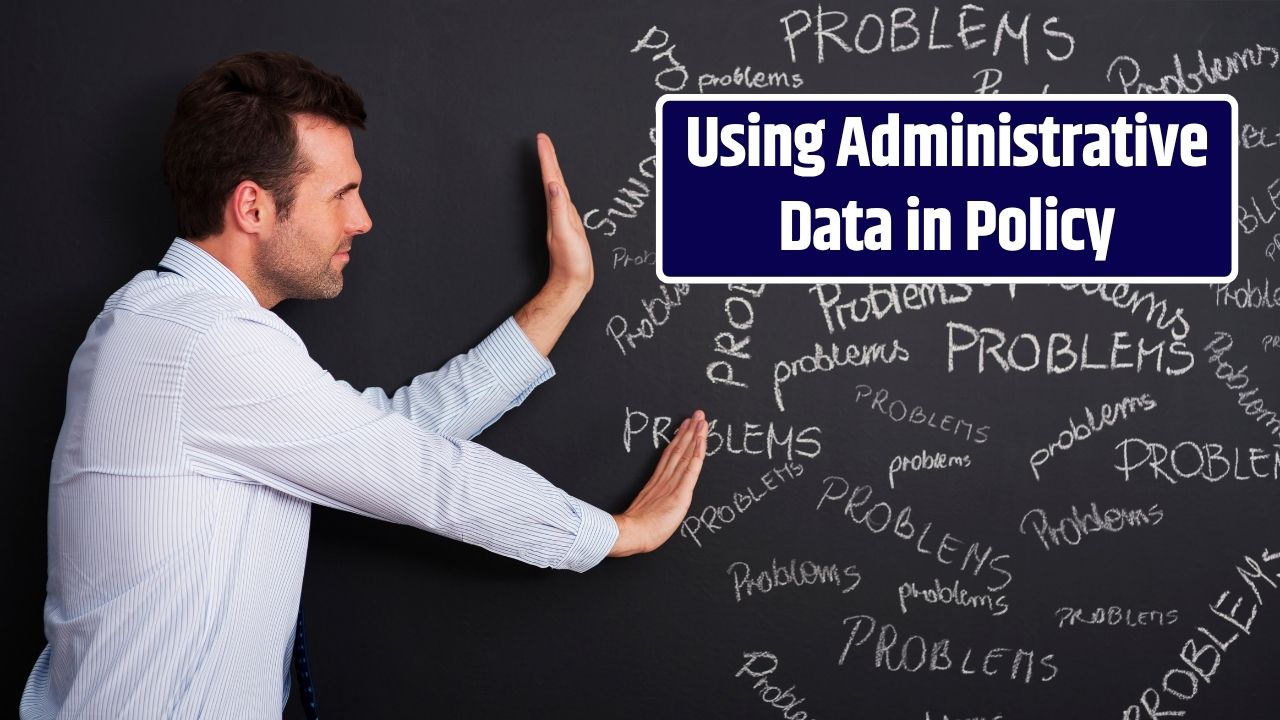Administrative data—the information governments already collect during the delivery of services like education, healthcare, housing, and welfare—has become a cornerstone of modern public policy research. In 2025, as policymakers seek to make smarter, faster, and more equitable decisions, using administrative data allows researchers and analysts to study real-world impacts at scale, over time, and with greater precision than ever before.
This guide explains how to use administrative data effectively in public policy studies, including its benefits, challenges, and real-world applications.
Table of Contents
What Is Administrative Data?
Administrative data refers to data routinely collected by government agencies and public institutions for program operations, compliance, or record-keeping—not originally for research. It includes:
| Source | Examples |
|---|---|
| Tax records | Income, employment, Earned Income Tax Credit (EITC) |
| Education systems | Test scores, attendance, graduation rates |
| Health departments | Hospital visits, Medicaid claims, immunization records |
| Social services | SNAP, TANF, child welfare case files |
| Housing authorities | Housing vouchers, eviction filings |
Why Use Administrative Data in Public Policy Studies?
Large and Representative
Covers entire populations, not just samples—enabling more accurate, generalizable insights.
Cost-Effective
Reduces the need for new surveys or data collection efforts.
Longitudinal
Tracks individuals, families, or communities over time to assess long-term outcomes.
Policy-Relevant
Directly tied to programs and interventions policymakers care about.
Use Cases: How Administrative Data Informs Policy
| Policy Area | Administrative Data Used | Research Outcome |
|---|---|---|
| Education | Student test scores + program enrollment | Evaluated impact of afterschool tutoring on performance |
| Healthcare | Medicaid claims, ER visits | Measured effects of insurance expansion on preventative care |
| Labor & Workforce | Employment and wage records | Assessed job training program impact on earnings |
| Public Assistance | SNAP benefit usage and recertification rates | Analyzed participation gaps by region and race |
| Housing | Section 8 voucher usage, eviction filings | Tracked effects of rent subsidies on housing stability |
How to Use Administrative Data in Research
1. Define the Policy Question
Clearly identify what you’re trying to understand. For example:
- Did the EITC reduce child poverty?
- What’s the long-term impact of public pre-K on academic achievement?
2. Identify Relevant Data Sources
Determine which agencies hold the data you need. Often, combining datasets (e.g., linking education records with family income data) yields deeper insights.
3. Secure Data Access and Permissions
This often involves:
- Data-sharing agreements (MOUs)
- Institutional Review Board (IRB) approvals
- Privacy and confidentiality compliance (e.g., HIPAA, FERPA)
Pro tip: Work with agency partners early—they can streamline access and validate data quality.
4. Clean and Link the Data
Administrative datasets often require:
- Deduplication
- Consistent formatting
- Matching records across systems (e.g., via ID numbers or secure hashes)
Use data linking techniques to build a full picture across domains (e.g., education + welfare).
5. Analyze with Caution
While administrative data is rich, it wasn’t designed for research. Consider:
- Missing or incomplete fields
- Changes in data definitions over time
- Program eligibility rules that shape who’s in the dataset
6. Interpret Results in Context
Complement administrative data with qualitative research or survey data when possible to understand the why behind the what.
Challenges in Using Administrative Data
| Challenge | Description |
|---|---|
| Privacy and confidentiality | Strict rules around personally identifiable information (PII) |
| Access barriers | Bureaucratic delays, lack of agency staff to process requests |
| Data quality issues | Incomplete records, inconsistent reporting across jurisdictions |
| Legal restrictions | Laws like FERPA or HIPAA limit how education or health data can be shared |
| Lack of metadata | Poor documentation makes it hard to understand variable definitions |
Best Practices for Using Administrative Data
- Build partnerships with public agencies—trust and collaboration are key
- Plan ahead for data access, legal agreements, and approvals
- Document everything—from data cleaning steps to codebooks
- Be transparent about data limitations in reports and publications
- Protect privacy with anonymization, secure storage, and ethical protocols
The Future: Smarter, Faster, Fairer Public Policy
In 2025, more governments are adopting integrated data systems and data collaboratives that link education, health, housing, and employment records securely and ethically. This enables more holistic research on social mobility, program effectiveness, and systemic inequality.
When used responsibly, administrative data allows researchers to move from isolated case studies to population-level insights, providing the evidence needed to build smarter, fairer public programs.
FAQs
Is administrative data always accurate?
Not always. It’s collected for operations, not research, so researchers must assess and clean it carefully.
Can administrative data replace surveys?
Not entirely. It complements surveys well but often lacks context, perceptions, and qualitative depth.
Is access to administrative data free?
Sometimes, but there may be costs for staff time, data processing, or storage. Costs vary by agency and project scope.
Is it legal to use government data in research?
Yes—with appropriate data-sharing agreements, privacy protections, and often IRB approval.


























